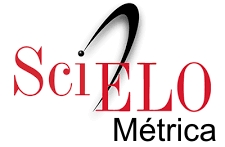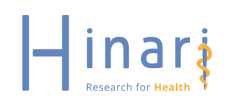Obesidad e hipertensión arterial y su relación con la pérdida de peso
Resumen
La obesidad es una acumulación anormal y excesiva de grasa perjudicial para la salud con impacto negativo en la calidad de vida, asociada comorbilidades como la hipertensión arterial. En 2015 se estimaba 603,7 millones de adultos con obesidad en el mundo. Los datos de NHANES consideran un aumento progresivo de obesidad y sobrepeso en los últimos 30 años que paso de 22,9% a 42,4%. En Ecuador 6 de cada 10 personas tienen sobrepeso u obesidad. La hipertensión en la obesidad está determinada con mayor frecuencia por el envejecimiento vascular acelerado por procesos inflamatorios, estrés oxidativo y resistencia a la insulina.
Las modificaciones en el estilo de vida determinan que por cada 1 kg de pérdida de peso disminuye a corto plazo 1 mmHg de la presión arterial sistólica. La cirugía bariátrica posee un impacto en la pérdida de peso y los factores cardiovasculares. Los registros epidemiológicos han demostrado una relación lineal directa entre la obesidad y la presión arterial: a medida que aumenta el peso, aumenta la presión arterial. De la misma manera, el efecto de reducción de la presión arterial sobre la pérdida de peso parece ser lineal: a mayor pérdida de peso mayor disminución de la presión arterial.
Citas
2. Wood GC, Bailey-Davis L, Benotti P, Cook A, Dove J, Mowery J, et al. Effects of sustained weight loss on outcomes associated with obesity comorbidities and healthcare resource utilization. PLoS One. 2021;16(11):e0258545. doi: 10.1371/journal.pone.0258545
3. Centers for Disease Control and Prevention. Adult obesity facts [Internet]. Atlanta: Centers for Disease Control and Prevention; 2021. [cited 2022 Mar 22]. Available from: https://www.cdc.gov/obesity/data/adult.html
4. Hales CM, Carroll MD, Fryar ChD, Ogden CL. Prevalence of obesity and severe obesity among adults: United States, 2017-2018. NCHS Data Brief. 2020;(360):1-8
5. Perreault L. Obesity in adults: Prevalence, screening, and evaluation. UpToDate [Internet]. [cited 2022 Febr 1]. Available from: https://www.uptodate.com/contents/obesity-in-adults-prevalence-screening-and-evaluation?search=obesidad&source=search_result&selectedTitle=2~150&usage_type=default&display_rank=2
6. Instituto Nacional de Estadística y Censos (INEC). Encuesta nacional de salud y nutrición 2018 [Internet]. Ecuador: INEC; 2018. [citado 1 Febr 2022]. Disponible en: https://www.ecuadorencifras.gob.ec/documentos/web-inec/Estadisticas_Sociales/ENSANUT/ENSANUT_2018/Principales%20resultados%20ENSANUT_2018.pdf
7. Gandotra Ch, Basam M, Mahajan A, Ngwa J, Ortega G, Tran D, et al. Characteristics and resolution of hypertension in obese African American bariatric cohort. Sci Rep. 2021; 11:1683. https://doi.org/10.1038/s41598-021-81360-y
8. Lin X, Li H. Obesity: Epidemiology, pathophysiology, and therapeutics. Front Endocrinol (Lausanne) [Internet]. 2021 [cited 2022 Mar 26];12: 706978. Available from: https://pubmed.ncbi.nlm.nih.gov/34552557. doi: 10.3389/fendo.2021.706978
9. Ma Ch, Avenell A, Bolland M, Hudson J, Stewart F, Robertson C, et al. Effects of weight loss interventions for adults who are obese on mortality, cardiovascular disease, and cancer: systematic review and meta-analysis. BMJ. 2017;359:j4849. doi: 10.1136/bmj.j4849
10. Kyrou I, Randeva HS, Tsigos C, Kaltsas G, Weickert MO. Clinical problems caused by obesity. En: Feingold KR, Anawalt B, Boyce A, Chrousos G, W de Herder W, Dhatariya K, et al, Editores. Endocrinology Book [Internet]. South Dartmouth: Endotext; 2018 [cited 2022 Mar 26]. Available from: https://www.ncbi.nlm.nih.gov/books/NBK278973
11. Abdelaal M, Roux CW le, Docherty NG. Morbidity and mortality associated with obesity. Ann Transl Med [Internet]. 2017 [cited 2022 Mar 26]; 5(7): 161. Available from: https://www.ncbi.nlm.nih.gov/pmc/articles/PMC5401682. doi: 10.21037/atm.2017.03.107
12. Haase ChL, Lopes S, Olsen AH, Satylganova A, Schnecke V, McEwan P. Weight loss and risk reduction of obesity-related outcomes in 0.5 million people: evidence from a UK primary care database. Int J Obes. 2021;45(6):1249-58. doi: https://doi.org/10.1038/s41366-021-00788-4
13. Ghanemi A, Yoshioka M, St-Amand J. Broken energy homeostasis and obesity pathogenesis: The surrounding concepts. J Clin Med. 2018;7(11):453. doi: 10.3390/jcm7110453
14. World Health Organization. Obesity and overweight in the Western Pacific [Internet]. World Health Organization; 2022. [cited 2022 Feb 23]. Available from: https://www.who.int/westernpacific/health-topics/obesity
15. Panuganti KK, Nguyen M, Kshirsagar RK. Obesity. En: Aboubakr S, Abu-Ghosh A, Acharya AA, Sedeh PA, Aeby TC, Aeddula NR , et al, Editors. StatPearls [Internet]. Treasure Island (FL): StatPearls Publishing; 2022 [cited 2022 Mar 26]. Available from: http://www.ncbi.nlm.nih.gov/books/NBK459357
16. Ward ZJ, Bleich SN, Cradock AL, Barrett JL, Giles CM, Flax Ch, et al. Projected U.S. State-Level prevalence of adult obesity and severe obesity. N Engl J Med [Internet]. 2019 [cited 2022 Mar 26];381(25):2440-50. Available from: https://www.nejm.org/doi/10.1056/NEJMsa1909301?url_ver=Z39.88-2003&rfr_id=ori:rid:crossref.org&rfr_dat=cr_pub%20%200pubmed doi: 10.1056/NEJMsa1909301
17. Mišigoj-Duraković M, Sorić M, Duraković Z. Anthropometry in cardio-metabolic risk assessment. Arh Hig Rada Toksikol. 2014;65(1):19-27. doi:10.2478/10004-1254-65-2014-2381
18. Ross R, Neeland IJ, Yamashita S, Shai I, Seidell J, Magni P, et al. Waist circumference as a vital sign in clinical practice: a Consensus Statement from the IAS and ICCR Working Group on Visceral Obesity. Nat Rev Endocrinol [Internet]. 2020 [cited 2022 Mar 26]; 16(3): 177–89. Available from: https://www.ncbi.nlm.nih.gov/pmc/articles/PMC7027970. doi: 10.1038/s41574-019-0310-7
19. Al-Domi H, Al-Shorman A. Increased waist circumference is associated with subclinical atherosclerosis in schoolchildren. Diabetes Metab Syndr. 2019;13(1):264-9
20. Gamboa A, Figueroa R, Paranjape SY, Farley G, Diedrich A, Biaggioni I. Autonomic blockade reverses endothelial dysfunction in obesity-associated hypertension. Hypertension. 2016;68(4):1004-10. 10.1161/HYPERTENSIONAHA.116.07681
21. Huby A-C, Antonova G, Groenendyk J, Gomez-Sanchez CE, Bollag WB, Filosa JA, Belin de Chantemèle EJ. Adipocyte-Derived hormone leptin is a direct regulator of aldosterone secretion, which promotes endothelial dysfunction and cardiac fibrosis. Circulation. 2015;132(22):2134-45. doi: 10.1161/CIRCULATIONAHA.115.018226
22. Buglioni A, Cannone V, Cataliotti A, Sangaralingham SJ, Heublein DM, Scott ChG, et al. Circulating aldosterone and natriuretic peptides in the general community: Relationship to cardiorenal and metabolic disease. Hypertension. 2015;65(1):45-53. doi: 10.1161/HYPERTENSIONAHA.114.03936
23. Valensi P. Autonomic nervous system activity changes in patients with hypertension and overweight: role and therapeutic implications. Cardiovasc Diabetol. 2021;20(1):170. doi: 10.1186/s12933-021-01356-w
24. Caillon A, Schiffrin EL. Role of inflammation and immunity in hypertension: Recent epidemiological, laboratory, and clinical evidence. Curr Hypertens Rep. 2016;18(3):21. doi: 10.1007/s11906-016-0628-7
25. Gamez-Mendez AM, Vargas-Robles H, Ríos A, Escalante B. Oxidative stress-dependent coronary endothelial dysfunction in obese mice. Plos One. 2015;10(9):e0138609. doi: 10.1371/journal.pone.0138609
26. Hurrle S, Hsu WH. The etiology of oxidative stress in insulin resistance. Biomed J. 2017;40(5):257-62. doi: 10.1016/j.bj.2017.06.007
27. Quijano C, Trujillo M, Castro L, Trostchansky A. Interplay between oxidant species and energy metabolism. Redox Biol. 2016; 8:28-42. doi: 10.1016/j.redox.2015.11.010
28. Seravalle G, Grassi G. Obesity and hypertension. Pharmacol Res. 2017;122:1-7. doi: 10.1016/j.phrs.2017.05.013
29. Ormazabal V, Nair S, Elfeky O, Aguayo C, Salomon C, Zuñiga FA. Association between insulin resistance and the development of cardiovascular disease. Cardiovasc Diabetol. 2018;17(1):122. doi: 10.1186/s12933-018-0762-4
30. Brunner EJ, Shipley MJ, Ahmadi-Abhari S, Tabak AG, McEniery CM, Wilkinson IB, et al. Adiposity, obesity, and arterial aging. Hypertension. 2015;66(2):294-300. doi: https://doi.org/10.1161/HYPERTENSIONAHA.115.05494
31. Li J, Zhu J, Tan Z, Yu Y, Luo L, Zhou W, et al. Visceral adiposity index is associated with arterial stiffness in hypertensive adults with normal-weight: the china H-type hypertension registry study. Nutr Metab (Lond). 2021;18(1):90. doi: 10.1186/s12986-021-00617-5
32. Csige I, Ujvárosy D, Szabó Z, Lőrincz I, Paragh G, Harangi M, et al. The impact of obesity on the cardiovascular system. J Diabetes Res. 2018; 2018:3407306. doi: 10.1155/2018/3407306
33. Gutiérrez-Cuevas J, Galicia-Moreno M, Monroy-Ramírez HCh, Sandoval-Rodriguez A, García-Bañuelos J, Santos A, Armendariz-Borunda J. The role of NRF2 in obesity-associated cardiovascular risk factors. Antioxidants (Basel). 2022;11(2):235. doi: 10.3390/antiox11020235
34. Gaesser GA, Angadi SS. Obesity treatment: Weight loss versus increasing fitness and physical activity for reducing health risks. iScience. 2021;24(10):102995. doi: 10.1016/j.isci.2021.102995
35. McTigue KM, Chang YF, Eaton Ch, Garcia L, Johnson KC, Lewis CE, et al. Severe obesity, heart disease, and death among white, African American, and Hispanic postmenopausal women. Obesity (Silver Spring) . 2014;22(3):801-10. doi: 10.1002/oby.20224
36. Kovesdy CP, Furth SL, Zoccali C. Obesity and kidney disease. Can J Kidney Health Dis. 2017; 4:2054358117698669. doi: 10.1177/2054358117698669
37. Locke JE, Reed RD, Massie A, MacLennan PA, Sawinski D, Kumar V, et al. Obesity increases the risk of end-stage renal disease among living kidney donors. Kidney Int. 2017;91(3):699-703. doi: 10.1016/j.kint.2016.10.014
38. Landi F, Calvani R, Picca A, Tosato M, Martone AM, Ortolani E, et al. Body mass index is strongly associated with hypertension: Results from the Longevity Check-Up 7+ study. Nutrients. 2018;10(12):1976. doi: 10.3390/nu10121976
39. Ikramuddin S, Korner J, Lee WJ, Thomas AJ, Connett JE, Bantle JP, et al. Lifestyle intervention and medical management with vs without Roux-en-Y gastric bypass and control of hemoglobin A1c, LDL cholesterol, and systolic blood pressure at 5 years in the diabetes surgery study. JAMA. 2018;319(3):266-78. doi: 10.1001/jama.2017.20813
40. Gorostegi-Anduaga I, Corres P, MartinezAguirre-Betolaza A, Pérez-Asenjo J, Aispuru GR, Fryer SM, Maldonado-Martín S. Effects of different aerobic exercise programmes with nutritional intervention in sedentary adults with overweight/obesity and hypertension: EXERDIET-HTA study. Eur J Prev Cardiol. 2018;25(4):343-53. doi: 10.1177/2047487317749956
41. Benaiges D, Climent E, Goday A, Flores-Le Roux JA, Pedro-Botet J. Bariatric surgery and hypertension: implications and perspectives after the GATEWAY randomized trial. Cardiovasc Diagn Ther. 2019;9(1):100-3. doi: 10.21037/cdt.2018.10.04
42. Blumenthal JA, Sherwood A. Missing ingredients for a lifestyle recipe to treat hypertension. J Thorac Dis. 2018;10(2):653-6. doi: 10.21037/jtd.2018.01.06
43. Hall KD, Kahan S. Maintenance of lost weight and long-term management of obesity. Med Clin North Am. 2018;102(1):183-97. doi: 10.1016/j.mcna.2017.08.012
44. Schwingshackl L, Chaimani A, Schwedhelm C, Toledo E, Pünsch M, Hoffmann G, Boeing H. Comparative effects of different dietary approaches on blood pressure in hypertensive and pre-hypertensive patients: A systematic review and network meta-analysis. Crit Rev Food Sci Nutr. 2019;59(16):2674-87. doi: 10.1080/10408398.2018.1463967
45. Graudal NA, Hubeck‐Graudal T, Jurgens G. Effects of low sodium diet versus high sodium diet on blood pressure, renin, aldosterone, catecholamines, cholesterol, and triglyceride. Cochrane Database Syst Rev [Internet]. 2011 [cited 2022 Feb 23];(11). Available from: https://www.cochranelibrary.com/cdsr/doi/10.1002/14651858.CD004022.pub3/full. doi: 10.1002/14651858.CD004022.pub3
46. Persoskie A, Kaufman AR, Leyva B. Receiving and adhering to lifestyle modification counseling for hypertension: Disparities between smokers and nonsmokers. J Clin Hypertens (Greenwich). 2014;16(6):429-36. doi: https://doi.org/10.1111/jch.12314
47. Shariq OA, McKenzie TJ. Obesity-related hypertension: a review of pathophysiology, management, and the role of metabolic surgery. Gland Surg. 2020;9(1):80-93. doi: 10.21037/gs.2019.12.03
48. Cohen JB, Gadde KM. Weight loss medications in the treatment of obesity and hypertension. Curr Hypertens Rep. 2019;21(2):16. doi: 10.1007/s11906-019-0915-1
49. Kuno T, Tanimoto E, Morita S, Shimada YJ. Effects of bariatric surgery on cardiovascular disease: A concise update of recent advances. Front Cardiovasc Med. 2019;6:94. doi: https://doi.org/10.3389/fcvm.2019.00094
50. Schiavon CA, Bersch-Ferreira AC, Santucci EV, Oliveira JD, Torreglosa CR, Torres Bueno P, et al. Effects of bariatric surgery in obese patients with hypertension: The GATEWAY randomized trial (Gastric bypass to treat obese patients with steady hypertension). Circulation. 2018;137(11):1132-42. doi: 10.1161/CIRCULATIONAHA.117.032130
51. Mingrone G, Panunzi S, Gaetano AD, Guidone C, Iaconelli A, Nanni G, et al. Bariatric–metabolic surgery versus conventional medical treatment in obese patients with type 2 diabetes: 5 year follow-up of an open-label, single-centre, randomised controlled trial. Lancet. 2015;386(9997):964-73
52. Fantin F, Giani A, Zoico E, Rossi AP, Mazzali G, Zamboni M. Weight loss and hypertension in obese subjects. Nutrients. 2019;11(7):1667. doi: 10.3390/nu11071667
53. Lohmeier TE, Iliescu R. The sympathetic nervous system in obesity hypertension. Curr Hypertens Rep. 2013;15(4):409-16. doi: 10.1007/s11906-013-0356-1
54. Gadde KM, Pritham Raj Y. Pharmacotherapy of obesity: Clinical trials to clinical practice. Curr Diab Rep. 2017; 17(5):34
55. Gadde KM, Martin CK, Berthoud HR, Heymsfield SB. Obesity: Pathophysiology and management. J Am Coll Cardiol. 2018; 71(1):69-84. doi: 10.1016/j.jacc.2017.11.011
56. Gadde KM, Apolzan JW, Berthoud HR. Pharmacotherapy for patients with obesity. Clin Chem. 2018; 64(1):118-29. doi: 10.1373/clinchem.2017.272815

















